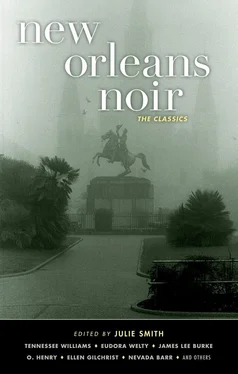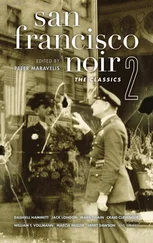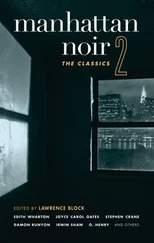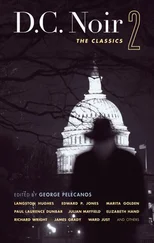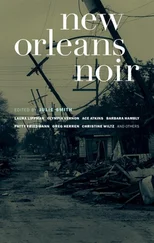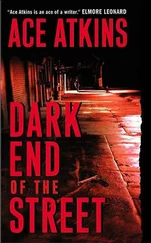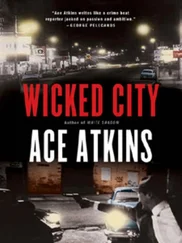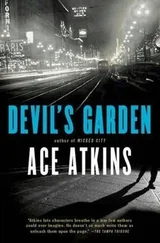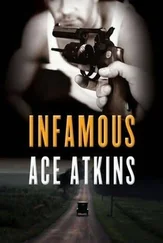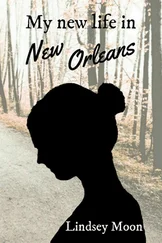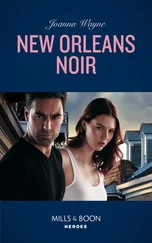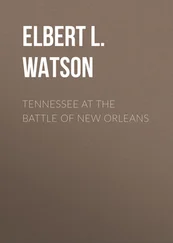Ace Atkins - New Orleans Noir - The Classics
Здесь есть возможность читать онлайн «Ace Atkins - New Orleans Noir - The Classics» весь текст электронной книги совершенно бесплатно (целиком полную версию без сокращений). В некоторых случаях можно слушать аудио, скачать через торрент в формате fb2 и присутствует краткое содержание. Город: New York, Год выпуска: 2016, ISBN: 2016, Издательство: Akashic Books, Жанр: Детектив, на английском языке. Описание произведения, (предисловие) а так же отзывы посетителей доступны на портале библиотеки ЛибКат.
- Название:New Orleans Noir: The Classics
- Автор:
- Издательство:Akashic Books
- Жанр:
- Год:2016
- Город:New York
- ISBN:978-1-61775-384-8
- Рейтинг книги:3 / 5. Голосов: 1
-
Избранное:Добавить в избранное
- Отзывы:
-
Ваша оценка:
- 60
- 1
- 2
- 3
- 4
- 5
New Orleans Noir: The Classics: краткое содержание, описание и аннотация
Предлагаем к чтению аннотацию, описание, краткое содержание или предисловие (зависит от того, что написал сам автор книги «New Orleans Noir: The Classics»). Если вы не нашли необходимую информацию о книге — напишите в комментариях, мы постараемся отыскать её.
takes a literary tour through some of the darkest writing in New Orleans history.
New Orleans Noir: The Classics — читать онлайн бесплатно полную книгу (весь текст) целиком
Ниже представлен текст книги, разбитый по страницам. Система сохранения места последней прочитанной страницы, позволяет с удобством читать онлайн бесплатно книгу «New Orleans Noir: The Classics», без необходимости каждый раз заново искать на чём Вы остановились. Поставьте закладку, и сможете в любой момент перейти на страницу, на которой закончили чтение.
Интервал:
Закладка:
Miles and me came home and played music, including gigs at Sharkey Bonano’s Dream Room on Bourbon Street. Tony brought Vietnam back to New Orleans and carried it with him wherever he went. I wished Tony hadn’t gotten messed up in the war and I wished he hadn’t become a criminal, either. He was a good guy and had a good heart. So did Miles. That’s why we were pals. Somehow, if we stayed together, we knew we’d never die.
Remember rumbles? When I was a kid, the gangs were Irish or Italian. Projects like the Iberville were all white, but the kids in them were the toughest I ever knew. They used to steal skulls out of the crypts in the St. Louis cemeteries and skate down North Villere Street with the skulls mounted on broomsticks. In the tenth grade a bunch of them took my saxophone away from me on the streetcar. Tony went into the project by himself, made a couple of guys wet their pants, then walked into this kid’s apartment while the family was eating supper and came back out with my sax. Nobody said squat.
Back in the 1950s and ’60s, criminals had a funny status in New Orleans. There were understandings between the NOPD and the Italian crime family that ran all the vice. Any hooker who cooperated with a Murphy sting on a john in the Quarter got a bus ticket back to Snake’s Navel, Texas. Her pimp went off a rooftop. A guy who jack-rolled tourists or old people got his wheels broken with batons and was thrown out of a moving car by the parish line. Nobody was sure what happened to child molesters. They never got found.
But the city was a good place. You ever stroll across Jackson Square in the early morning, when the sky was pink and you could smell the salt on the wind and the coffee and pastry from the Café du Monde? Miles and me used to sit in with Louis Prima and Sam Butera. That’s no jive, man. We’d blow until sunrise, then eat a bagful of hot beignets and sip café au lait on a steel bench under the palms while the sidewalk artists were setting up their easels and paints in the square. The mist and sunlight in the trees looked like cotton candy. That was before the city went down the drain and before Miles and me went down the drain with it.
Crack cocaine hit the projects in the early eighties. Black kids all over the downtown area reminded me of the characters in Night of the Living Dead . They loved 9mm automatics too. The Gipper whacked federal aid to the city by half, and the murder rate in New Orleans became the highest in the United States. We got to see a lot of David Duke. He had his face remodeled with plastic surgery and didn’t wear a bedsheet or a Nazi armband anymore, so the white-flight crowd treated him like Jefferson Davis and almost elected him governor.
New Orleans became a free-fire zone. Miles and me drifted around the Gulf Coast and smoked a lot of weed and pretended we were still jazz musicians. I’m not being honest here. It wasn’t just weed. We moved right on up to the full-tilt boogie and joined the spoon-and-eyedropper club. Tony threw us both in a Catholic hospital and told this three-hundred-pound Mother Superior to beat the shit out of us with her rosary beads, one of these fifteen-decade jobs, if we tried to check out before we were clean.
But all these things happened before the storm hit New Orleans. After the storm passed, nothing Miles and Tony and me had done together seemed very important.
The color of the water is chocolate-brown, with a greenish-blue shine on the surface like gasoline, except it’s not gasoline. All the stuff from the broken sewage mains has settled on the bottom. When people try to walk in it, dark clouds swell up around their chests and arms. I’ve never smelled anything like it.
The sun is a yellow flame on the brown water. It must be more than ninety-five degrees now. At dawn, I saw a black woman on the next street, one that’s lower than mine, standing on top of a car roof. She was huge, with rolls of fat on her like a stack of inner tubes. She was wearing a purple dress that had floated up over her waist and she was waving at the sky for help. Miles rowed a boat from the bar he owns on the corner, and the two of us went over to where the car roof was maybe six feet underwater by the time we got there. The black lady was gone. I keep telling myself a United States Coast Guard chopper lifted her off. Those Coast Guard guys are brave. Except I haven’t heard any choppers in the last hour.
Miles and me tie the boat to a vent on my roof and sit down on the roof’s spine and wait. Miles takes out a picture of him and Tony and me together, at the old amusement park on Lake Pontchartrain. We’re all wearing jeans and T-shirts and duck-ass haircuts, smiling, giving the camera the thumbs-up. You can’t believe how handsome both Tony and Miles were, with patent-leather-black hair and Italian faces like Rudolph Valentino. Nobody would have ever believed Miles would put junk in his arm or Tony would come back from Vietnam with helicopter blades still thropping inside his head.
Miles brought four one-gallon jugs of tap water with him in his boat, which puts us in a lot better shape than most of our neighbors. This is the Ninth Ward of Orleans Parish. Only two streets away I can see the tops of palm trees sticking out of the water. I can also see houses that are completely covered. Last night I heard people beating the roofs from inside the attics in those houses. I have a feeling the sounds of those people will never leave my sleep, that the inside of my head is going to be like the inside of Tony’s.
The church up the street is made out of pink stucco and has bougainvillea growing up one wall. The water is up to the little bell tower now, and the big cross in the breezeway with the hand-carved wooden Jesus on it is deep underwater. The priest tried to get everybody to leave the neighborhood, but a lot of people didn’t have cars, or at least cars they could trust, and because it was still two days till payday, most people didn’t have any money, either. So the priest said he was staying too. An hour later the wind came off the Gulf and began to peel the face off South Louisiana.
This morning, I saw the priest float past the top of a live oak tree. He was on his stomach, his clothes puffed with air, his arms stretched out by his sides, like he was looking for something down in the tree.
The levees are busted and a gas main has caught fire under the water and the flames have set fire to the roof of a two-story house on the next block. Miles is pretty disgusted with the whole business. “When this is over, I’m moving to Arizona,” he says.
“No, you won’t,” I say.
“Watch me.”
“This is the Big Sleazy. It’s Guatemala. We don’t belong anywhere else.”
He doesn’t try to argue with that one. When we were kids we played with guys who had worked for King Oliver and Kid Orey and Bunk Johnson, Miles on the drums, me on tenor sax. Flip Phillips and Jo Jones probably didn’t consider us challenges to their careers, but we were respected just the same. A guy who could turn his sticks into a white blur at The Famous Door is going to move to a desert and play “Sing, Sing, Sing” for the Gila monsters? That Miles breaks me up.
His hair is still black, combed back in strings on his scalp, the skin on his arms white as a baby’s, puckered more than it should be, but the veins are still blue and not collapsed or scarred from the needlework we did on ourselves. Miles is a tough guy, but I know what he’s thinking. Tony and him and me started out together, then Tony got into the life, and I mean into the life, man — drugs, whores, union racketeering, loan-sharking, maybe even popping a couple of guys. But no matter how many crimes he may have committed, Tony held on to the one good thing in his life, a little boy who was born crippled. Tony loved that little boy.
Читать дальшеИнтервал:
Закладка:
Похожие книги на «New Orleans Noir: The Classics»
Представляем Вашему вниманию похожие книги на «New Orleans Noir: The Classics» списком для выбора. Мы отобрали схожую по названию и смыслу литературу в надежде предоставить читателям больше вариантов отыскать новые, интересные, ещё непрочитанные произведения.
Обсуждение, отзывы о книге «New Orleans Noir: The Classics» и просто собственные мнения читателей. Оставьте ваши комментарии, напишите, что Вы думаете о произведении, его смысле или главных героях. Укажите что конкретно понравилось, а что нет, и почему Вы так считаете.
